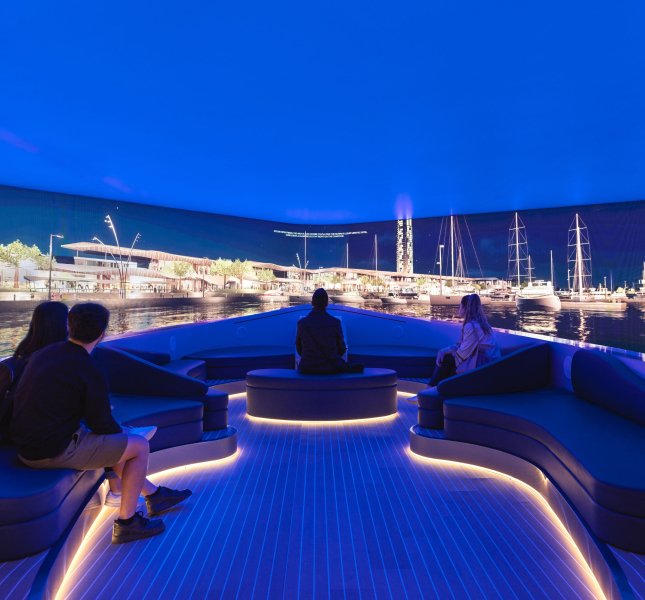Rethinking Product Development Cycles That Look Like Design –> Development

Twenty-something years ago, the line drawn between developers and designers was strong.
The artsy soon-to-be iMac wielding designer handled the pixels, while the nerd was in charge of the black box known as code. Don’t get me wrong, as an industry, we’ve produced magic with this classic code-these-designs linear approach, but there’s a lot more to be gained if we’re willing to mix things up even more.
Yes, it’s time for designers and developers to make love. Why? Because, the reality is, while a lot has changed, we’re still far from seeing genuine collaboration between these two skill sets. We all know that when deadlines are tight, there’s little imperative to take the time to learn something new. But, over the years, I’ve come to see the value in dedicating time to learning the ins and outs of my colleagues skill set too. I believe that by taking a few simple steps, and prioritising ways to cross-pollinate ideas and share learnings, this is a golden opportunity for all.
So what are my tips?
1. Dedicate Time to Learning More About Your Colleagues Skillset
To help blur the line between disciplines, it’s important both designers and developers spend time learning each other’s craft. The goal is not to be able to do their job, but to ensure both teams understand how to improve on each other’s work better. For example, simple things, such as correctly exporting an SVG file, setting a custom ease to an animation, or knowing a thing or two about colour contrast are now fundamental to a front-end developer’s skill set.
In turn, designers need to be able to identify which content will be created by the user, the limitations of the most popular web browsers, and if something should be designed to show while other content is being loaded. The point is, it’s not enough to simply be the best at what you do, it helps to know a lot about what the rest of your team does as well.
2. Involve All Actors Early On
The old website-making model suggests that designers come up with the idea, the client approves and then finally, the designs are sent to the developers to do their business. But this way of working is out of date! Nowadays, it’s important to involve creative technologists from the start. This way, they can flag possible complications and provide alternatives that truly add value to a project to provide the best end-to-end customer experience possible.
As a developer myself, I can vouch for the fact that to reach my true creative potential, it helps to think along with the project from its initial phase. If you can just dedicate a couple of hours of collaboration during the design process and be agile in how you collaborate, having us nerds come in to point in the right direction, the team can save days of development time at the end. (And raise your hand if you love efficiency!)
On the other hand, it’s paramount that designers don’t completely move away from a project after the first designs have been signed off too. By bringing them along in the development phase, they’re able to bring their keen eye in to check on small visual details. Speaking from experience, I also know they’re also able to provide creative solutions to problems that tend to come up after quite some lines of code have been pushed.
3. Remember That Communication Is Key
I’ve seen developers do black magic and waste away hours trying to make a specific feature work, simply because it’s something the client is expecting. Many of those times, the feature doesn’t even add value to the project and could have been replaced by a better, easier feature that only a developer could have brought to the table.
Finding ways to foster communication between developers and designers throughout the process builds trust and ultimately, it means all team members have a sense of ownership for the final product. It’s not rocket science, but working in this way is not only better for the product, but the whole team too.
Once developers are invited to throw their two cents into the creative process, they’re more likely to trust that the end result won’t be a death sentence. And if the team has had the chance to collaborate at an early stage, there’s a good chance the designers will have kept the technological limitations in mind too.
It’s Time to Mix It Up!
Why leave all the creative thinking to designers, when developers need to come up with original, out-of-the-box solutions too? And why leave the logic to developers, when disciplines such as UX and animation require the mastery of logical thinking too?
So, go on and give your developers some creative credit and encourage your designers to pump the iron on their left hand side of the brain too. Because collaboration is key, and once the ideas are flowing, there’s no stopping what we can do.
Related
Thinking
Sharpen your edge in a world that won't wait
Sign up to get email updates with actionable insights, cutting-edge research and proven strategies.
Monks needs the contact information you provide to us to contact you about our products and services. You may unsubscribe from these communications at any time. For information on how to unsubscribe, as well as our privacy practices and commitment to protecting your privacy, please review our Privacy Policy.



